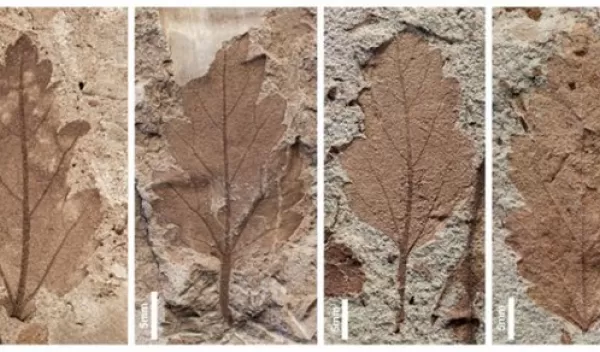
Leaf fossils show severe end-Cretaceous plant extinction in Patagonia
The asteroid impact 66 million years ago that ushered in a mass extinction and ended the dinosaurs also killed off many of the plants they relied on for food. Fossil leaf assemblages from Patagonia suggest that vegetation in South America suffered great losses but rebounded quickly, according to researchers funded by the U.S. National Science Foundation. The results of the study, the first of its kind in the Southern Hemisphere, appear in the journal Paleobiology.
"Every mass extinction event is like a reset button, and what happens after that reset depends on which organisms survive and how they shape the biosphere," said Elena Stiles of the University of Washington. "All the biodiversity that we observe today is related to the organisms that made it past the last big reset 66 million years ago."
Stiles and her colleagues at Penn State examined more than 3,500 leaf fossils collected at two sites in Patagonia to identify how many species from the geologic period known as the Cretaceous survived the mass extinction event into the Paleogene period. Although plant families in the region fared well, the scientists found a surprising species-level extinction rate that may have reached as high as 92% in Patagonia, higher than previous studies have estimated for the region.
"There's this idea that the Southern Hemisphere got off easier from the Cretaceous-Paleogene extinction than the Northern Hemisphere because we keep finding plant and animal groups that no one thought survived," said Peter Wilf, a geoscientist at Penn State. "We went into this study expecting that Patagonia was a refuge, and instead we found a complex story of extinction and rebound."
Unlike North America, where the Cretaceous-Paleogene boundary is well known from many sites in the western United States, the fossil record from this period is fragmented across the Southern Hemisphere, a result of rapidly changing ancient environments.
"This study highlights the importance of a global perspective on the Cretaceous-Paleogene extinction," says Christopher Schneider, a program director in NSF's Division of Environmental Biology. "The impacts in the Southern Hemisphere are not well understood, and this project goes a long way toward filling that knowledge gap."


